Blog

The CPA (Cost Per Action) model simplifies the approach to advertising by focusing on one crucial aspect: the action. For advertisers, the CPA model is attractive because it mitigates financial risk. Payments are only made when desired actions are completed, ensuring that each dollar spent directly contributes to tangible results. Affiliates, on the other hand, benefit from the clear objectives and measurable outcomes of affiliate campaigns. This transparency allows them to focus on activities that directly lead to conversions.
Understanding what a CPA offer is, how to find them, and the most effective ways to promote them can significantly enhance an affiliate’s success and profitability in this competitive space. In this article, we’ll explain what CPA offers are and how they work.
CPA – or Cost Per Action – stands out as a popular pricing model that tilts the scale toward performance-based advertising. Unlike other models, where payment is due for mere impressions or clicks, CPA requires an action. This action can be as simple as an email sign-up, a form submission, or a purchase. The defining trait of CPA is that advertisers pay only when a specific action, beneficial to their business, is completed.
When exploring what a CPA offer is, it’s important to understand that it refers to an agreement where an affiliate is compensated for successfully driving a user to complete a predetermined action outlined by the advertiser. This focus on results makes CPA offers particularly attractive both to advertisers looking for a surefire return on investment, and affiliates who can leverage their skills to earn more by driving successful conversions.
Let’s break down common payout models based on specific actions that trigger conversions. Each type has its own criteria and suitability for different advertising goals:
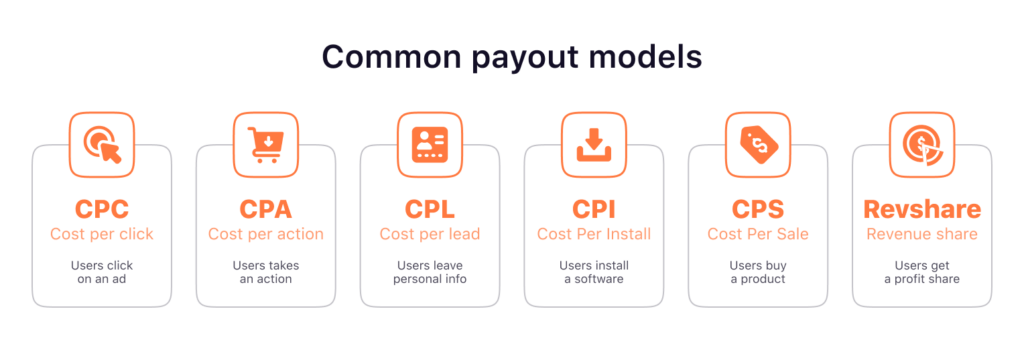
Each of these conversion types is suited to different marketing objectives and offers varying levels of complexity and potential reward. Choosing the right type depends on the specific goals of the campaign, the target audience, and the nature of the product or service being promoted.
Diving into CPA marketing requires a nuanced understanding of the different categories and types of offers available.
Adult offers, intended for 18+ audiences, include content that may be considered sensitive, such as adult entertainment and sex dating services. These offers generally require careful, targeted marketing strategies to navigate stricter regulations and to reach the intended demographic effectively.
Mainstream offers encompass a broader range of services and products accessible to general audiences, excluding everything related to the adult niche. These offers are often easier to promote due to fewer restrictions and wider acceptance across advertising platforms. Examples of mainstream offers include VPN services and dating apps for an audience looking for a life partner.
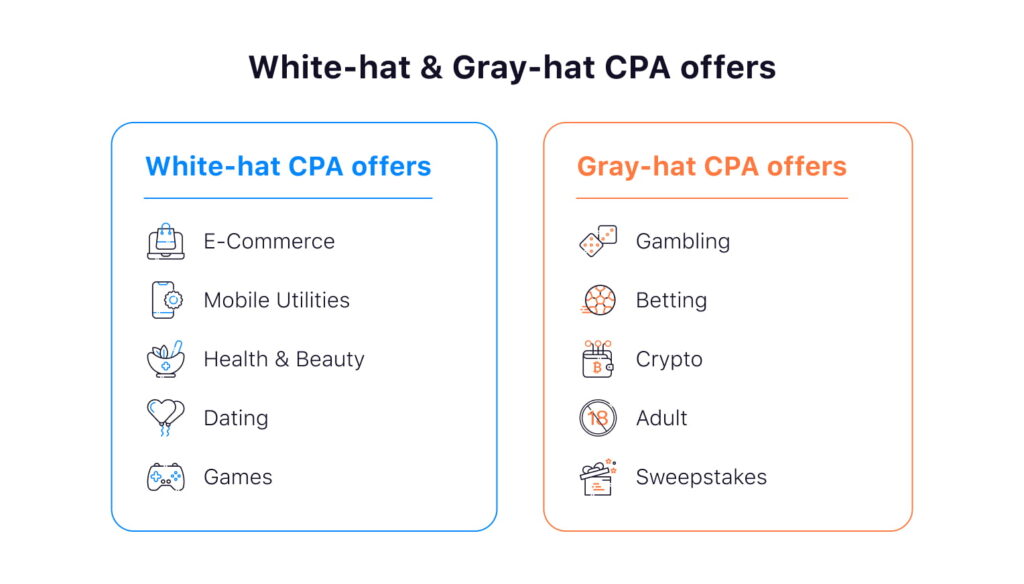
White hat offers adhere to legal and ethical advertising standards, making them safer in terms of compliance and audience reception. They are generally straightforward and transparent in promotion, leading to stable marketing efforts. For example, consider an e-commerce offer for household goods where the advertisement clearly outlines the product features, price, and return policy. Another example is educational courses that offer straightforward information on course content and certification outcomes.
Gray hat offers explore the boundaries of marketing regulations. While not illegal, these strategies may involve ambiguous advertising, which can lead to higher scrutiny and potential backlash. They often require more careful handling to maintain profitability while managing risks. Common examples include certain gambling promotions that promise huge bonuses without clearly disclosing the stringent conditions attached. Cryptocurrency offers could also fall into this category, particularly those promoting massive ROI without telling you what’s at stake.
CPA verticals differ not only in the offers and customer actions they focus on but also in competition levels and payout potential. High-competition verticals, like gambling and finance, often come with higher payouts due to the significant efforts and costs associated with attracting conversions. Conversely, lower-competition niches such as sweepstakes or certain nutra offers are easier entry points and may require less intensive marketing efforts, but typically come with lower payouts.
Finding lucrative CPA offers isn’t rocket science, but it does require knowing where to look. Affiliate marketers can start with CPA networks or affiliate programs.
Affiliate platforms act as the middleman between advertisers and affiliates, offering a wide range of CPA network offers across various niches. These platforms provide the infrastructure for tracking, payments, and dispute resolution which simplifies the process for both parties.
Some of the most popular affiliate marketing networks include:

This CPA network is part of the RichAds advertising holding company and specializes in a variety of niches including apps, betting, dating, gambling, software, and casino. The network hosts over 500 offers and is known for its low payment threshold of $100 with weekly payments. Yellana supports multiple commission types, including CPA, CPL, CPS, CPI, and RevShare.
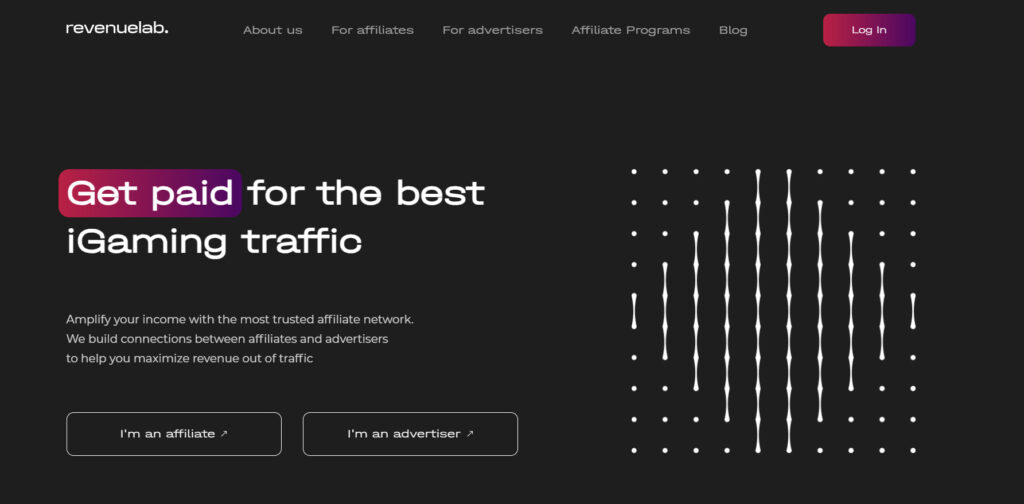
Focusing primarily on the iGaming industry, RevenueLab offers more than 1200 betting, gambling, and casino offers. This network is designed to help partners’ businesses grow by providing access to top-notch offers from global advertisers. RevenueLab has a minimum payment threshold of $100 and offers payment frequencies twice a month or monthly. Commission types available include CPA and RevShare.
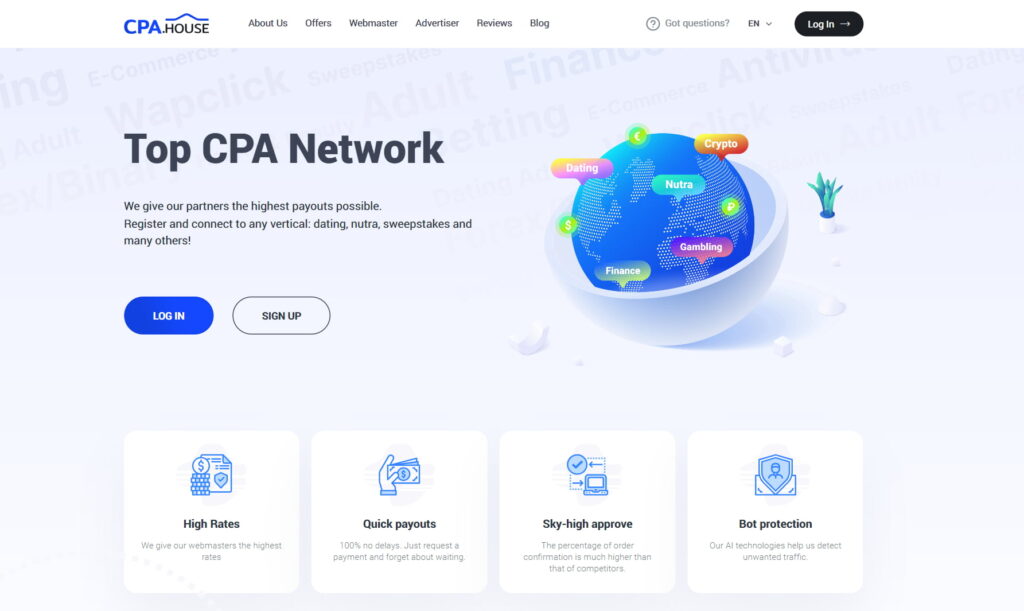
CPA.house stands out with its extensive offer base of over 4100 CPA offers across Dating, Gambling, Mobile, Nutra, Software, and Sweepstakes. The platform is known for its quick setup, allowing affiliates to start earning within 10 minutes of registration thanks to fast moderation of traffic sources. The minimum payment threshold is relatively low at $50, with payment frequencies available twice a week or weekly.
Go to allcpanetwork.com to know more about affiliate networks.
Some advertisers choose to run their own affiliate programs, bypassing networks to directly manage their relationships with affiliates. This approach can often lead to more profitable arrangements as it eliminates the middleman, potentially resulting in higher commissions and more direct communication with the advertiser.
Examples of CPA offers from affiliate programs:
Working directly with an advertiser provides more control over the promotional strategies and often, more in-depth insights into product performance.
Choosing the right CPA offer can significantly influence the success of your affiliate marketing efforts. Here are practical tips to help you select the most lucrative CPA offers.
EPC is a crucial metric as it represents the average earnings you can expect to make for every click sent to the offer. A higher EPC indicates that the offer is performing well with other affiliates, suggesting its potential profitability. Always compare the EPC values across similar offers in the same niche to choose the one with the best performance.
The nature of the action required to earn a commission varies between offers. It could be as simple as a form submission (lead generation) or as complex as a sale. Offers requiring less commitment from the user typically have higher conversion rates, but may offer lower payouts. On the other hand, offers that require a purchase or a significant action usually provide higher payouts but convert at a lower rate. Assess which type aligns best with your traffic and marketing skills.
Some offers are specific to certain geographical locations. The GEO can significantly affect the conversion rate due to local interests, economic factors, and access to certain technologies. Offers targeting developed countries like the USA, Canada, UK, or Australia often come with higher payouts but also higher competition. In contrast, offers in emerging markets might have lower competition and surprisingly high returns if the product suits the local demand.
The conversion rate is a direct indicator of how well an offer resonates with the audience. A high CR means that a significant percentage of the traffic is completing the required action. However, be wary of offers with unusually high conversion rates; it’s essential to verify that these numbers are consistent and credible through further research or by querying the network.
Each CPA offer comes with its own set of rules and restrictions. Some might restrict the types of traffic you can use (like email marketing, PPC, social media), while others might have specific requirements about the geographic location of the traffic. Violating these terms can lead to not getting paid for your efforts.
Don’t hesitate to use the resources offered by your CPA network. Affiliate managers can provide insights into which offers are new and trending, or which have been consistently reliable in terms of payouts and affiliate satisfaction. Many networks also provide tools for tracking and optimizing your campaigns, which can help you refine your approach based on real performance data.
Before fully committing to an offer, run small test campaigns to gauge its performance with your traffic sources. Analyze the data and optimize accordingly – sometimes, even minor adjustments in your approach can significantly boost your results.
Choosing the right CPA offer involves analyzing data, understanding market trends, and aligning the offer with your audience’s interests and behaviors. By considering these factors systematically, you can increase your chances of picking offers that are not only profitable but also sustainable in the long run.
Once you have chosen your CPA offers based on their potential profitability and fit with your audience, the next step is to identify and utilize the right traffic sources for promotion. The effectiveness of your chosen traffic channels can greatly influence the success of your campaigns. Each channel has its strengths and limitations, and understanding these can help you optimize your promotions.
In this context, let’s explore top traffic sources for promoting CPA offers.
Push notifications are an increasingly popular tool for affiliate marketers due to their direct and personal nature.

Here’s why push ad networks stand out:
Social media channels like Facebook, Instagram, and Twitter can be potent for promoting CPA offers due to their vast user bases and sophisticated targeting options. However, it’s essential to adhere to each platform’s advertising policies and use appropriate targeting to reach potential customers effectively.
PPC campaigns on platforms like Google Ads and Microsoft Ads offer the ability to drive targeted traffic to your CPA offers effectively. These platforms enable advertisers to place ads in search results and on partner websites, targeting specific demographics and keywords. However, it’s crucial to be aware of the stringent policies that these platforms enforce, especially regarding gray-hat verticals, such as Gambling, Betting, Adult, etc.
Native advertising integrates ads seamlessly into web content, making them less intrusive and more engaging for viewers. This format is particularly effective for offers that require more detailed explanations or content-based interactions. Native ads can be configured easily across various ad networks, which provide tools for creating and managing these ads effectively.
The format can work particularly well in conjunction with other advertising types. For example, a native ad can introduce a potential customer to a product, while follow-up push notifications can keep the customer engaged and drive them towards a conversion.
Navigating the realm of CPA offers requires a strategic approach tailored to the ever-evolving landscape of affiliate marketing. As you embark on this journey, the ability to adapt and refine your strategies in response to changing market conditions and audience preferences will be paramount. Leveraging the right traffic sources, like push ad networks and native advertising, will further enhance your campaign performance, driving conversions and boosting profitability. In the end, your success in CPA marketing will depend on continuous learning and vigilant optimization.
The CPA (Cost Per Action) model simplifies the approach to advertising by focusing on one crucial aspect: the action. For advertisers, the CPA model is attractive because it mitigates financial risk. Payments are only made when desired actions are completed, ensuring that each dollar spent directly contributes to tangible results. Affiliates, on the other hand, benefit from the clear objectives and measurable outcomes of affiliate campaigns. This transparency allows them to focus on activities that directly lead to conversions.
Understanding what a CPA offer is, how to find them, and the most effective ways to promote them can significantly enhance an affiliate’s success and profitability in this competitive space. In this article, we’ll explain what CPA offers are and how they work.
CPA – or Cost Per Action – stands out as a popular pricing model that tilts the scale toward performance-based advertising. Unlike other models, where payment is due for mere impressions or clicks, CPA requires an action. This action can be as simple as an email sign-up, a form submission, or a purchase. The defining trait of CPA is that advertisers pay only when a specific action, beneficial to their business, is completed.
When exploring what a CPA offer is, it’s important to understand that it refers to an agreement where an affiliate is compensated for successfully driving a user to complete a predetermined action outlined by the advertiser. This focus on results makes CPA offers particularly attractive both to advertisers looking for a surefire return on investment, and affiliates who can leverage their skills to earn more by driving successful conversions.
Let’s break down common payout models based on specific actions that trigger conversions. Each type has its own criteria and suitability for different advertising goals:

Each of these conversion types is suited to different marketing objectives and offers varying levels of complexity and potential reward. Choosing the right type depends on the specific goals of the campaign, the target audience, and the nature of the product or service being promoted.
Diving into CPA marketing requires a nuanced understanding of the different categories and types of offers available.
Adult offers, intended for 18+ audiences, include content that may be considered sensitive, such as adult entertainment and sex dating services. These offers generally require careful, targeted marketing strategies to navigate stricter regulations and to reach the intended demographic effectively.
Mainstream offers encompass a broader range of services and products accessible to general audiences, excluding everything related to the adult niche. These offers are often easier to promote due to fewer restrictions and wider acceptance across advertising platforms. Examples of mainstream offers include VPN services and dating apps for an audience looking for a life partner.

White hat offers adhere to legal and ethical advertising standards, making them safer in terms of compliance and audience reception. They are generally straightforward and transparent in promotion, leading to stable marketing efforts. For example, consider an e-commerce offer for household goods where the advertisement clearly outlines the product features, price, and return policy. Another example is educational courses that offer straightforward information on course content and certification outcomes.
Gray hat offers explore the boundaries of marketing regulations. While not illegal, these strategies may involve ambiguous advertising, which can lead to higher scrutiny and potential backlash. They often require more careful handling to maintain profitability while managing risks. Common examples include certain gambling promotions that promise huge bonuses without clearly disclosing the stringent conditions attached. Cryptocurrency offers could also fall into this category, particularly those promoting massive ROI without telling you what’s at stake.
CPA verticals differ not only in the offers and customer actions they focus on but also in competition levels and payout potential. High-competition verticals, like gambling and finance, often come with higher payouts due to the significant efforts and costs associated with attracting conversions. Conversely, lower-competition niches such as sweepstakes or certain nutra offers are easier entry points and may require less intensive marketing efforts, but typically come with lower payouts.
Finding lucrative CPA offers isn’t rocket science, but it does require knowing where to look. Affiliate marketers can start with CPA networks or affiliate programs.
Affiliate platforms act as the middleman between advertisers and affiliates, offering a wide range of CPA network offers across various niches. These platforms provide the infrastructure for tracking, payments, and dispute resolution which simplifies the process for both parties.
Some of the most popular affiliate marketing networks include:

This CPA network is part of the RichAds advertising holding company and specializes in a variety of niches including apps, betting, dating, gambling, software, and casino. The network hosts over 500 offers and is known for its low payment threshold of $100 with weekly payments. Yellana supports multiple commission types, including CPA, CPL, CPS, CPI, and RevShare.

Focusing primarily on the iGaming industry, RevenueLab offers more than 1200 betting, gambling, and casino offers. This network is designed to help partners’ businesses grow by providing access to top-notch offers from global advertisers. RevenueLab has a minimum payment threshold of $100 and offers payment frequencies twice a month or monthly. Commission types available include CPA and RevShare.

CPA.house stands out with its extensive offer base of over 4100 CPA offers across Dating, Gambling, Mobile, Nutra, Software, and Sweepstakes. The platform is known for its quick setup, allowing affiliates to start earning within 10 minutes of registration thanks to fast moderation of traffic sources. The minimum payment threshold is relatively low at $50, with payment frequencies available twice a week or weekly.
Go to allcpanetwork.com to know more about affiliate networks.
Some advertisers choose to run their own affiliate programs, bypassing networks to directly manage their relationships with affiliates. This approach can often lead to more profitable arrangements as it eliminates the middleman, potentially resulting in higher commissions and more direct communication with the advertiser.
Examples of CPA offers from affiliate programs:
Working directly with an advertiser provides more control over the promotional strategies and often, more in-depth insights into product performance.
Choosing the right CPA offer can significantly influence the success of your affiliate marketing efforts. Here are practical tips to help you select the most lucrative CPA offers.
EPC is a crucial metric as it represents the average earnings you can expect to make for every click sent to the offer. A higher EPC indicates that the offer is performing well with other affiliates, suggesting its potential profitability. Always compare the EPC values across similar offers in the same niche to choose the one with the best performance.
The nature of the action required to earn a commission varies between offers. It could be as simple as a form submission (lead generation) or as complex as a sale. Offers requiring less commitment from the user typically have higher conversion rates, but may offer lower payouts. On the other hand, offers that require a purchase or a significant action usually provide higher payouts but convert at a lower rate. Assess which type aligns best with your traffic and marketing skills.
Some offers are specific to certain geographical locations. The GEO can significantly affect the conversion rate due to local interests, economic factors, and access to certain technologies. Offers targeting developed countries like the USA, Canada, UK, or Australia often come with higher payouts but also higher competition. In contrast, offers in emerging markets might have lower competition and surprisingly high returns if the product suits the local demand.
The conversion rate is a direct indicator of how well an offer resonates with the audience. A high CR means that a significant percentage of the traffic is completing the required action. However, be wary of offers with unusually high conversion rates; it’s essential to verify that these numbers are consistent and credible through further research or by querying the network.
Each CPA offer comes with its own set of rules and restrictions. Some might restrict the types of traffic you can use (like email marketing, PPC, social media), while others might have specific requirements about the geographic location of the traffic. Violating these terms can lead to not getting paid for your efforts.
Don’t hesitate to use the resources offered by your CPA network. Affiliate managers can provide insights into which offers are new and trending, or which have been consistently reliable in terms of payouts and affiliate satisfaction. Many networks also provide tools for tracking and optimizing your campaigns, which can help you refine your approach based on real performance data.
Before fully committing to an offer, run small test campaigns to gauge its performance with your traffic sources. Analyze the data and optimize accordingly – sometimes, even minor adjustments in your approach can significantly boost your results.
Choosing the right CPA offer involves analyzing data, understanding market trends, and aligning the offer with your audience’s interests and behaviors. By considering these factors systematically, you can increase your chances of picking offers that are not only profitable but also sustainable in the long run.
Once you have chosen your CPA offers based on their potential profitability and fit with your audience, the next step is to identify and utilize the right traffic sources for promotion. The effectiveness of your chosen traffic channels can greatly influence the success of your campaigns. Each channel has its strengths and limitations, and understanding these can help you optimize your promotions.
In this context, let’s explore top traffic sources for promoting CPA offers.
Push notifications are an increasingly popular tool for affiliate marketers due to their direct and personal nature.

Here’s why push ad networks stand out:
Social media channels like Facebook, Instagram, and Twitter can be potent for promoting CPA offers due to their vast user bases and sophisticated targeting options. However, it’s essential to adhere to each platform’s advertising policies and use appropriate targeting to reach potential customers effectively.
PPC campaigns on platforms like Google Ads and Microsoft Ads offer the ability to drive targeted traffic to your CPA offers effectively. These platforms enable advertisers to place ads in search results and on partner websites, targeting specific demographics and keywords. However, it’s crucial to be aware of the stringent policies that these platforms enforce, especially regarding gray-hat verticals, such as Gambling, Betting, Adult, etc.
Native advertising integrates ads seamlessly into web content, making them less intrusive and more engaging for viewers. This format is particularly effective for offers that require more detailed explanations or content-based interactions. Native ads can be configured easily across various ad networks, which provide tools for creating and managing these ads effectively.
The format can work particularly well in conjunction with other advertising types. For example, a native ad can introduce a potential customer to a product, while follow-up push notifications can keep the customer engaged and drive them towards a conversion.
Navigating the realm of CPA offers requires a strategic approach tailored to the ever-evolving landscape of affiliate marketing. As you embark on this journey, the ability to adapt and refine your strategies in response to changing market conditions and audience preferences will be paramount. Leveraging the right traffic sources, like push ad networks and native advertising, will further enhance your campaign performance, driving conversions and boosting profitability. In the end, your success in CPA marketing will depend on continuous learning and vigilant optimization.
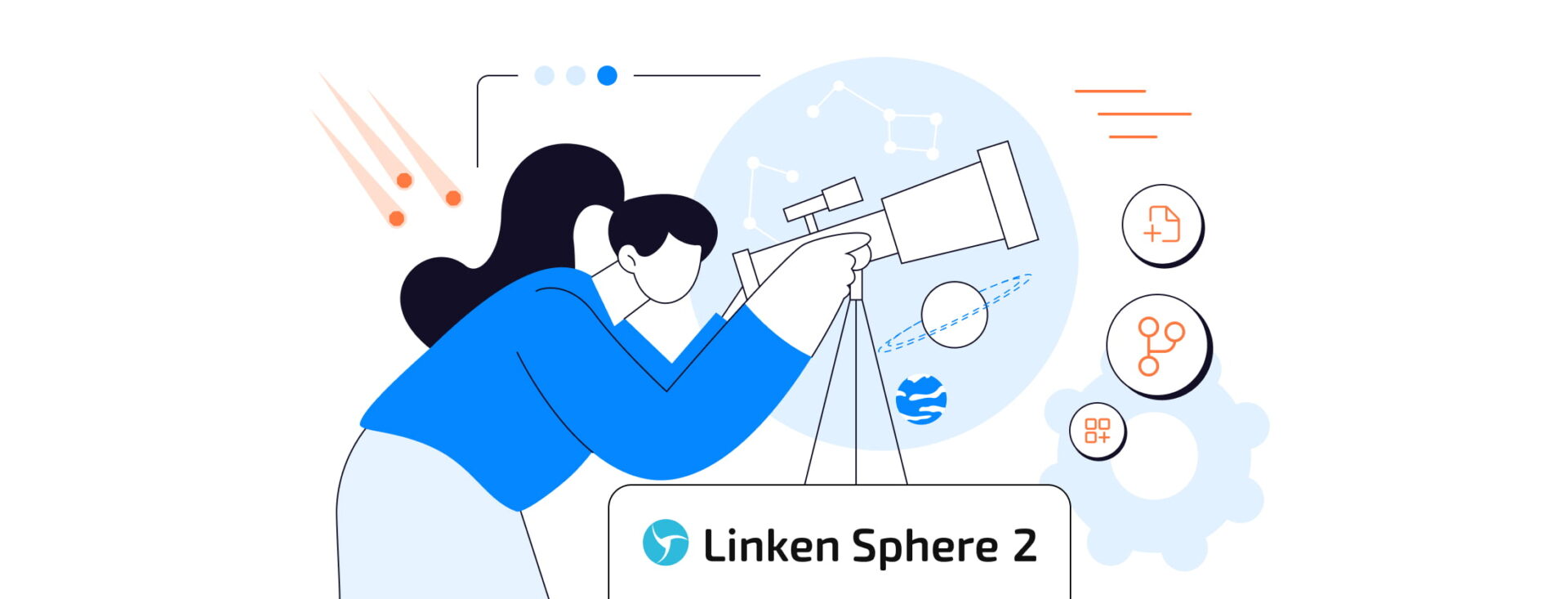
Blog

Blog